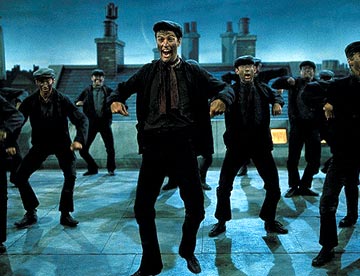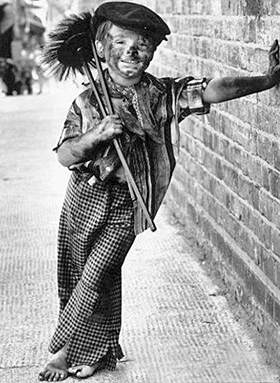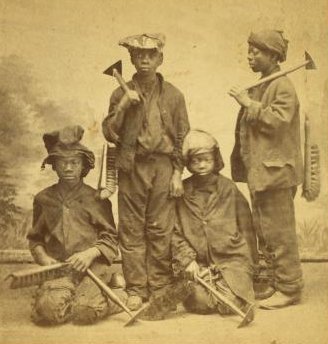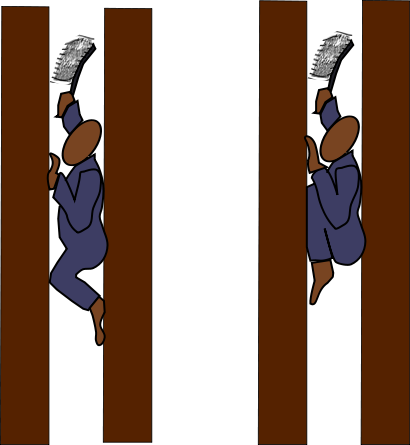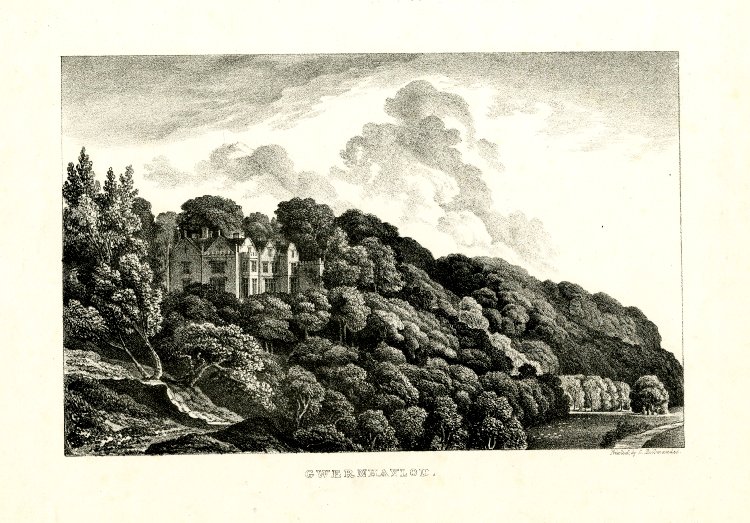The lecture notes are here. The live chat is here.
When you think of a Chimney Sweep, this image may come to mind.
But this image is probably a lot closer to young Master Armory.
This diagram shows the different ways a sweep can get stuck in a flute.
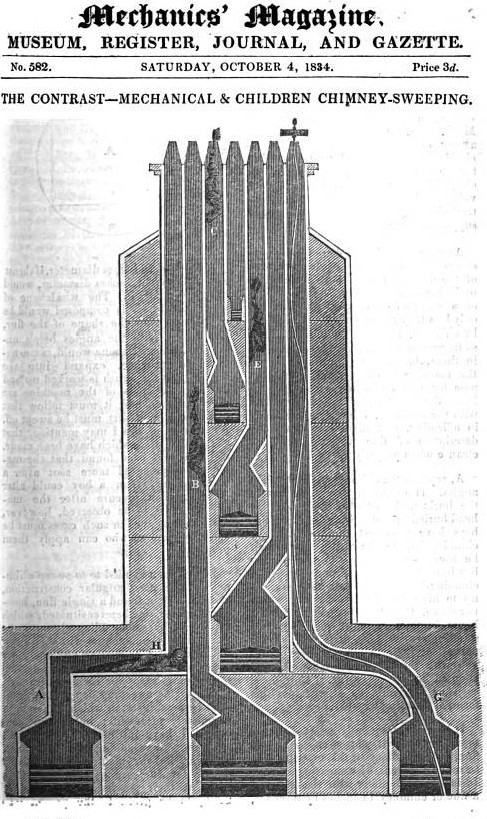
A seven-flue stack, showing how it would be cleaned by Climbing boys, or with little modification by a human cleaning machine (a brush). In the diagram:
A- is a hearth served by vertical flue, a horizontal flue, and then a vertical rise having two right-angled bends that were difficult for brushes.
B- is a long straight flue (14in by 9in) being climbed by a boy using back elbows and knees.
C- is a short flue from a second floor hearth. The climbing boy has reached the chimney pot, which has a diametre too small for him to exit that way
D (omitted) is a short flue from the third floor
E shows a disaster. The climbing boy is stuck in the flue, his knees jammed against his chin. The master sweep will have to cut away the chimney to remove him. First he will try to persuade him to move: sticking pins in the feet, lighting a small fire under him. Another boy could climb up behind him and try to pull him out with a rope tied round the legs- it would be hours before he suffocated.
F (omitted)
G How a flue could be straighten to make it sweepable by mechanical means
H A dead climbing boy, suffocated in a fall of soot that accumulated at the cant of the flue.
Frequently the boys would get stuck (the image on the right).
Here are some examples of de Lamerie’s work (courtesy of the Dukeminier property web site).
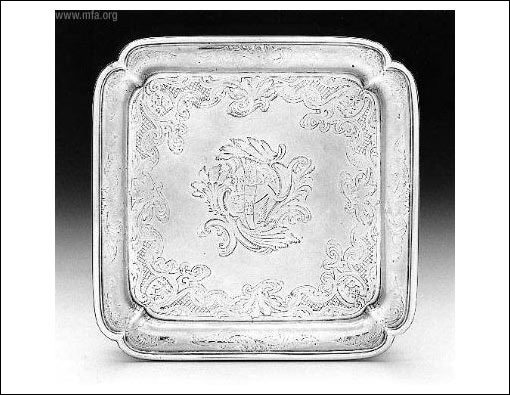
Source: Mfa.org. This was created in 1736 and is currently housed at the Museum of Fine Arts in Boston, Massachusetts.
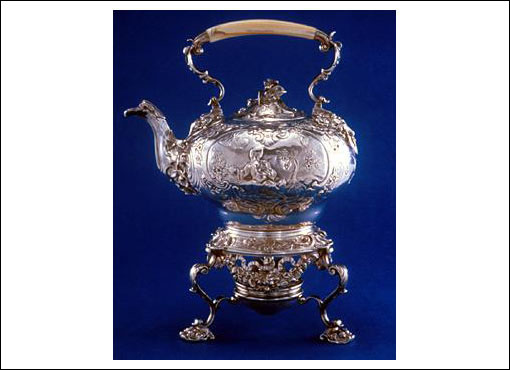
This work was created in 1745 and is housed at the Sterling and Francine Clark Art Institute in Williamstown, Massachusetts.
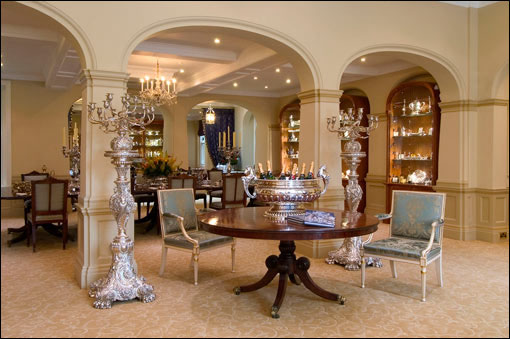
There are many different de Lamerie works in this photograph of the interior of the Marks Antique Silver gallery in London, England. Marks frequently sends travelling galleries of antique silver to the United States in places such as Palm Beach, L.A., and New York City.
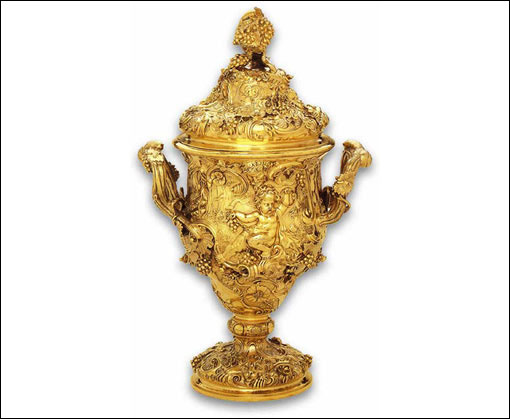
This is one of the less common gold pieces of art created by de Lamerie. This is housed at the Gilbert Collection in London, England.
Here are a number of stories about finding abandoned stuff:
- New York Times article on a jobless man’s find of early Anglo-Saxon treasure in Staffordshire, England, September 2009
- Article on on-going dispute over ownership of Titanic artifacts, Mar. 2009
- NPR story St. Louis’s byzantine process for dealing with lost property, Mar. 2009
- Divers discover thousands of pearls while searching Santa Maria, June 2007
- Odyssey Marine Exploration fights with Spanish government over $500 million in coins recovered from sunken ship, May 2007
- New Yorker article on Odyssey Marine Exploration, April 2008
- Sub Sea Research battles Spain & France over $3 billion of treasure, January 2003
- New York Times article on people who live by finding things in the garbage
This is a lithograph of Gwernaylod House in Overton-on-Dee, Wales (1829)
